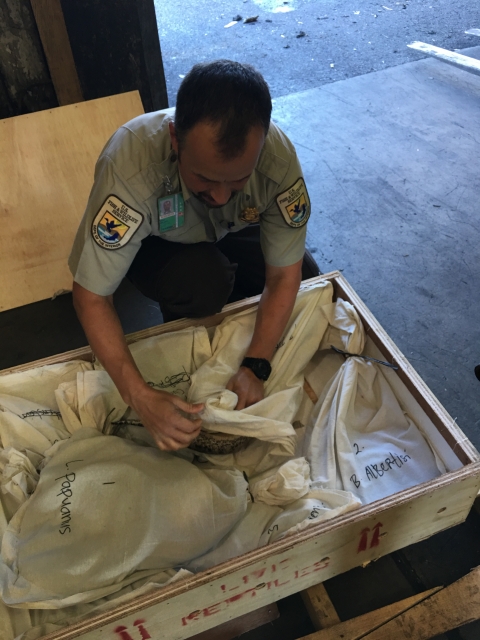What We Do
Effective law enforcement is essential to virtually every aspect of wildlife conservation. The OLE is the investigative arm of the Service tasked to investigate wildlife crimes, enforce wildlife laws, regulate wildlife trade, help Americans understand and obey wildlife protection laws, and work in partnership with international, federal, state, local, and tribal counterparts to conserve wildlife resources.
Examples of the OLE’s work includes:
Breaking up international and domestic trafficking rings that target imperiled animals
- Preventing the unlawful commercial exploitation of protected U.S. species
- Protecting wildlife from environmental hazards and safeguarding critical habitat for endangered species
- Enforcing federal migratory game bird hunting regulations and working with states to protect other game species from illegal take and preserve legitimate hunting opportunities
- Facilitating the legal wildlife trade and inspecting wildlife shipments to ensure compliance with laws and treaties
- Interdicting illegal wildlife products and injurious species before entering or leaving the country
- Working with international counterparts to combat illegal trafficking in protected species
- Training other tribal, state, federal, and international law enforcement officers
- Using forensic science to analyze evidence and solve wildlife crimes
- Distributing information and outreach materials to increase public understanding of wildlife conservation and promote compliance with wildlife protection laws
- Enforcing the Indian Arts and Crafts Act to investigate and arrest those who fraudulently produce or sell counterfeit American Indian and Alaskan Native art and craftwork



